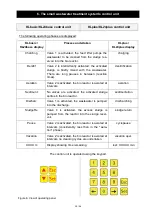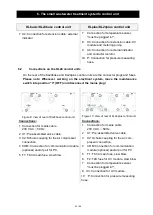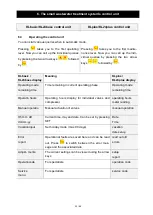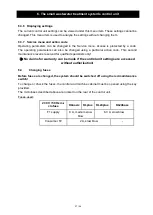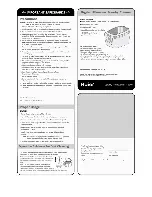
6. The small wastewater treatment system's control unit
28 / 54
Proceed as follows to change the microfuses:
Using an SL 1.0 x 5.5 slotted screwdriver, apply a little pressure to turn the head of the
fixture one quarter turn to the left (anticlockwise)
Remove the head of the fixture with the fuse
Change the fuse
Place the head and fuse in the fixture's opening
Using a screwdriver, apply a little pressure to the head of the fixture and anchor the fuse
by turning the head one quarter turn to the right (clockwise).
Note:
If you are not able to remedy the problem, please contact your maintenance company or GRAF
as soon as possible.
Function of the power cut detector
6.5
The control unit is equipped with a power cut detector, which is powered via an integrated
emergency power supply (buffer). Upon delivery, the emergency power supply is flat. It charges
when the control unit is switched on. In the event of a power cut, the charge of one emergency
power supply for indicating the power cut will last around 12 hours. If the emergency power
supply is not required in response to power cuts, it is prevented from discharging by a switching
circuit.
Important:
In the event of mains failure, the time / date setting is powered for around 10 days
by an extra buffer. All saved data, such as operating hours, program settings etc., is retained. If
the time and date are not set, weekly operating hours for the units are no longer saved. Error
messages occurring in the future are saved with the wrong date.
If the system is disconnected from the mains (e.g. due to a power cut, should the internal fuse
blow or by disconnecting from the socket), the indicator issues an acoustic and optical signal in
turn regardless of the cause. There is a 5-second delay before the device responds to a mains
failure. This prevents brief interrupts, which often occur e.g. during a storm but do not impact on
the wastewater treatment system's overall function, from being indicated unnecessarily.







